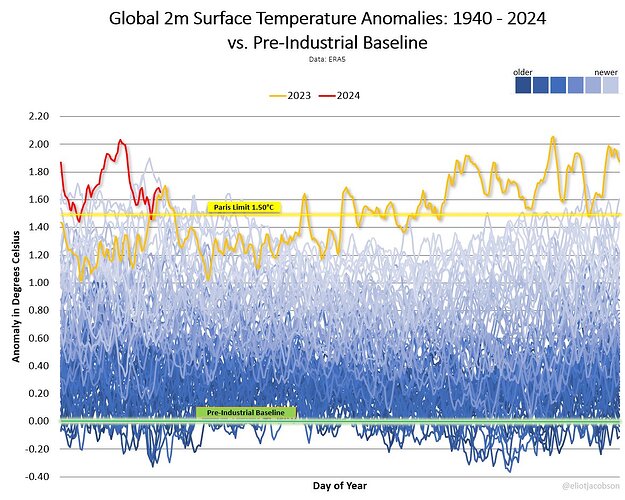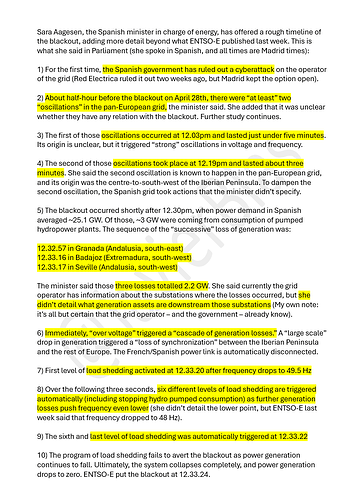Yeah but they’re boomers, can’t trust em. Good article
That’s just linking to their home page. Are you able to link to what this graph’s context is?
EDIT: Never mind, I found it. https://www.science.org/doi/10.1126/science.adk3705
Very interesting and also quite frightening:
Here, we present PhanDA, a reconstruction of GMST spanning most of the Phanerozoic Eon. PhanDA was created using data assimilation, a method that statistically integrates geological data with climate model simulations. PhanDA indicates that Earth’s temperature has varied between 11° and 36°C over the past 485 million years. This range is larger than previous reconstructions; however, PhanDA agrees well with independent GMST estimates from the Cenozoic, providing confidence in its larger dynamical range.
PhanDA reveals key features in the relationship between GMST and the pole-to-equator temperature gradient, including polar amplification (i.e., larger temperature changes at high latitudes) and a shallowing of the gradient with increasing GMST. Tropical temperatures range between 22° and 42°C, refuting the idea of a fixed upper limit on tropical warmth and suggesting that ancient life must have evolved to endure extreme heat. We parse PhanDA into five climate states and find that overall, Earth has spent more time in warmer climate states than cold ones during the Phanerozoic.
There is a strong relationship between PhanDA GMST and CO2, indicating that CO2 is the dominant control on Phanerozoic climate. The consistency of this relationship is surprising because on this timescale, we expect solar luminosity to influence climate. We hypothesize that changes in planetary albedo and other greenhouse gases (e.g., methane) helped compensate for the increasing solar luminosity through time. The GMST-CO2 relationship indicates a notably constant “apparent” Earth system sensitivity (i.e., the temperature response to a doubling of CO2, including fast and slow feedbacks) of ∼8°C, with no detectable dependence on whether the climate is warm or cold.

Snippets:
…Renewed European interest in nuclear power is in part because of an expected increase in demand for low-carbon electricity to decarbonise transport, industry and home heating in the decades ahead.
…Denmark may begin investing in modular nuclear reactors too, Lars Aagaard, the energy and climate minister, suggested.
Aagaard told the Danish newspaper Politiken: “We can see that there is a development under way with new nuclear power technologies – small, modular reactors. But it’s not enough that they have potential. We also need to know what it means for Danish society if we are to enable these technologies.”
…Denmark’s former prime minister Anders Fogh Rasmussen told the Financial Times on Wednesday he supported lifting the “ridiculous” ban on nuclear power.
“Wind and solar are good as long as you have wind and sunshine. But you have to have a non-fossil base-load and it’s ridiculous to exclude nuclear power in advance. My guess is that this is a process [from the government] towards lifting the ban,” he said.
A lot of Europe quite dependent on Russian gas in transitional era, and far less land mass for renewables than Oz
Opportunity knocked for Elon to do a promo for Starlink during the blackout. Starlink subscribers maintained internet access.


